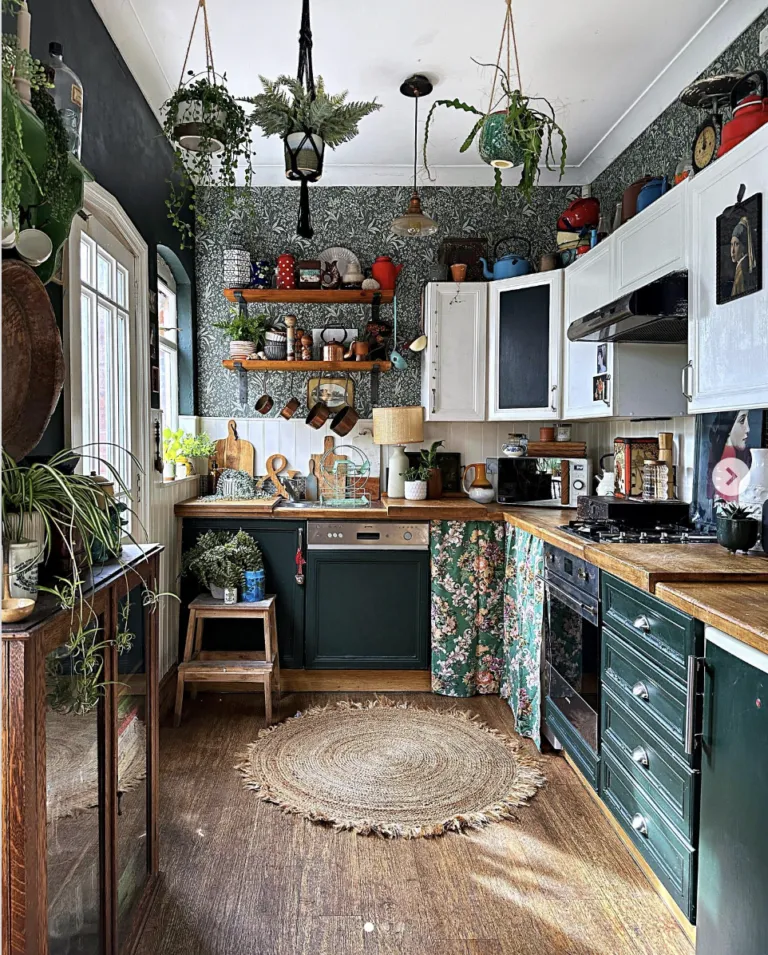Understanding Rustic Red Kitchen Decor
Rustic red kitchen decor blends the warmth of red with the charm and simplicity of rustic design. This style typically incorporates natural materials, vintage elements, and a sense of history to create a cozy and inviting space. The color red, in various shades from deep brick to vibrant cherry, adds a bold and passionate touch, making the kitchen a focal point of the home. Understanding the fundamentals of rustic design and the psychology behind color choices will help you create a space that is both visually stunning and functionally effective. The key is to strike a balance between the intensity of red and the grounding elements of rustic materials.
The Appeal of Rustic Design
Rustic design appeals to those who appreciate authenticity and a connection to nature. It embraces imperfections and celebrates the beauty of aged materials like wood, stone, and brick. In a kitchen, rustic design often features exposed beams, reclaimed wood cabinetry, and handmade details. The focus is on creating a comfortable and lived-in atmosphere, free from the formality of more contemporary styles. This approach often incorporates vintage accessories, antique furniture, and a color palette that is inspired by the natural world. The use of natural materials not only adds visual interest but also contributes to a sense of durability and timelessness that defines rustic charm. Moreover, it allows you to create a feeling of warmth and character that is often missing in modern kitchens.
Red in Kitchen Design Psychology
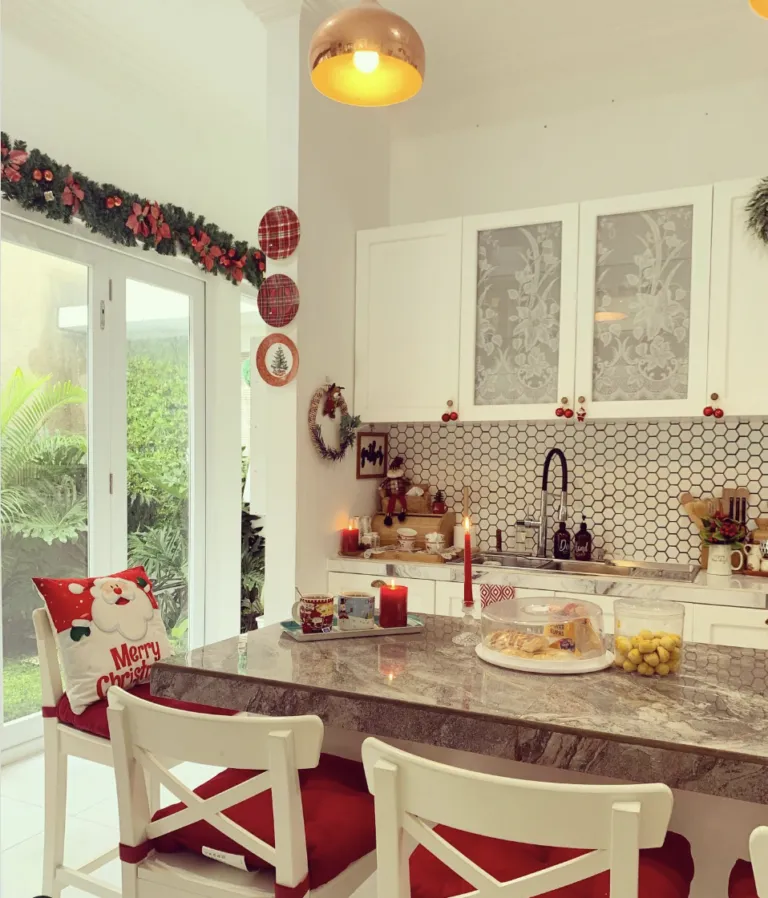
The color red is known to stimulate appetite, making it a popular choice for kitchens. It is an energetic color that can create a sense of excitement and warmth. In kitchen design, red can be used in various ways, from accent walls to cabinetry, and accessories. However, because red is a strong color, it is important to use it strategically. Balancing red with neutral tones, such as whites, creams, or wood tones, can prevent the space from feeling overwhelming. Consider the mood you want to create – a deep, muted red can evoke a sense of cozy intimacy, while a brighter red can energize the space and enhance social interaction. By carefully considering the use of red, you can design a kitchen that is not only visually appealing but also supports a positive and welcoming atmosphere.
Top 5 Rustic Red Kitchen Decor Layout Ideas
Choosing the right layout is crucial for making a rustic red kitchen both beautiful and functional. Here are five inspiring layout ideas that incorporate the warmth of red with the charm of rustic design.
Idea 1 Open Concept with Red Accents
An open-concept kitchen integrates the cooking space with the living or dining area, fostering a sense of togetherness. In this layout, red can be introduced through accent pieces like bar stools, decorative bowls, or a striking red range hood. Neutral walls and cabinetry provide a backdrop for the vibrant red accents. Consider incorporating rustic elements like reclaimed wood shelves or a farmhouse-style sink to complement the overall aesthetic. This design is ideal for creating a social space where cooking and entertaining blend seamlessly. Natural light also plays a crucial role; ensuring plenty of illumination highlights the red accents and creates a welcoming ambiance.
Choosing the Right Red Shade
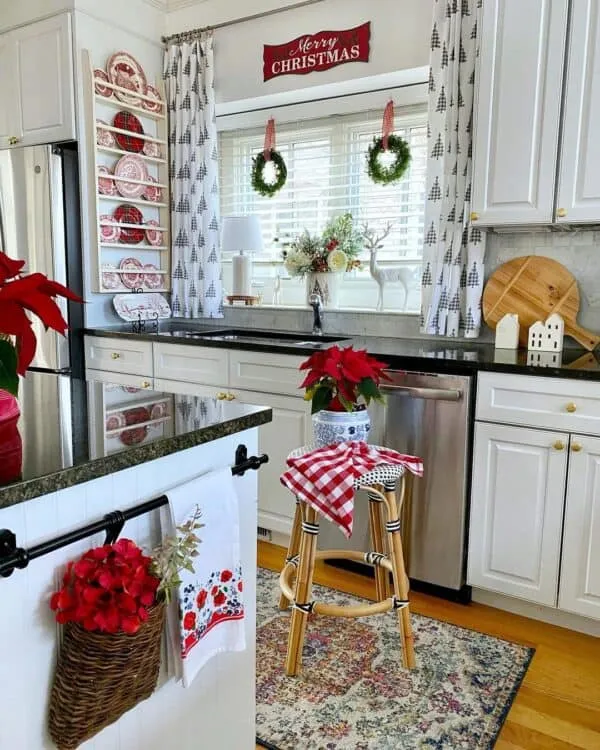
The choice of red shade can greatly impact the overall feel of your kitchen. For a rustic open-concept layout, consider using a muted or earthy red, such as terracotta or brick red, to complement the natural tones of wood and stone. These shades create a warm and inviting atmosphere without overwhelming the space. Alternatively, a brighter red can be used sparingly to add pops of energy and visual interest, perhaps through accessories or a feature wall. Always test paint samples in your kitchen to see how the light affects the color throughout the day, ensuring your chosen shade enhances the overall rustic aesthetic.
Incorporating Natural Materials
To enhance the rustic appeal, incorporate natural materials. Use reclaimed wood for open shelving to display your favorite cookware or vintage accessories. A butcher block countertop will add a classic rustic touch, while stone or brick backsplashes provide texture and visual interest. Consider adding exposed beams on the ceiling or a rustic-style island. These elements contribute to the cozy, welcoming environment that defines a rustic kitchen. The combination of red accents with natural materials creates a balanced and harmonious design, making your kitchen a delightful space for both cooking and entertaining.
Idea 2 Farmhouse Style with Red Cabinets
Farmhouse style is characterized by its warmth, simplicity, and functionality. Red cabinets can serve as the focal point in this design, especially when paired with white or cream walls and a neutral countertop. The juxtaposition of the bold red cabinetry against the softer, lighter tones creates a striking contrast. This layout is perfect for those who desire a kitchen that is both inviting and visually captivating. Incorporate vintage or antique elements to enhance the farmhouse aesthetic. Remember, the farmhouse style is all about creating a space that feels welcoming and lived-in, so don’t be afraid to embrace imperfections and embrace the charm of aged materials.
Cabinet Styles and Colors
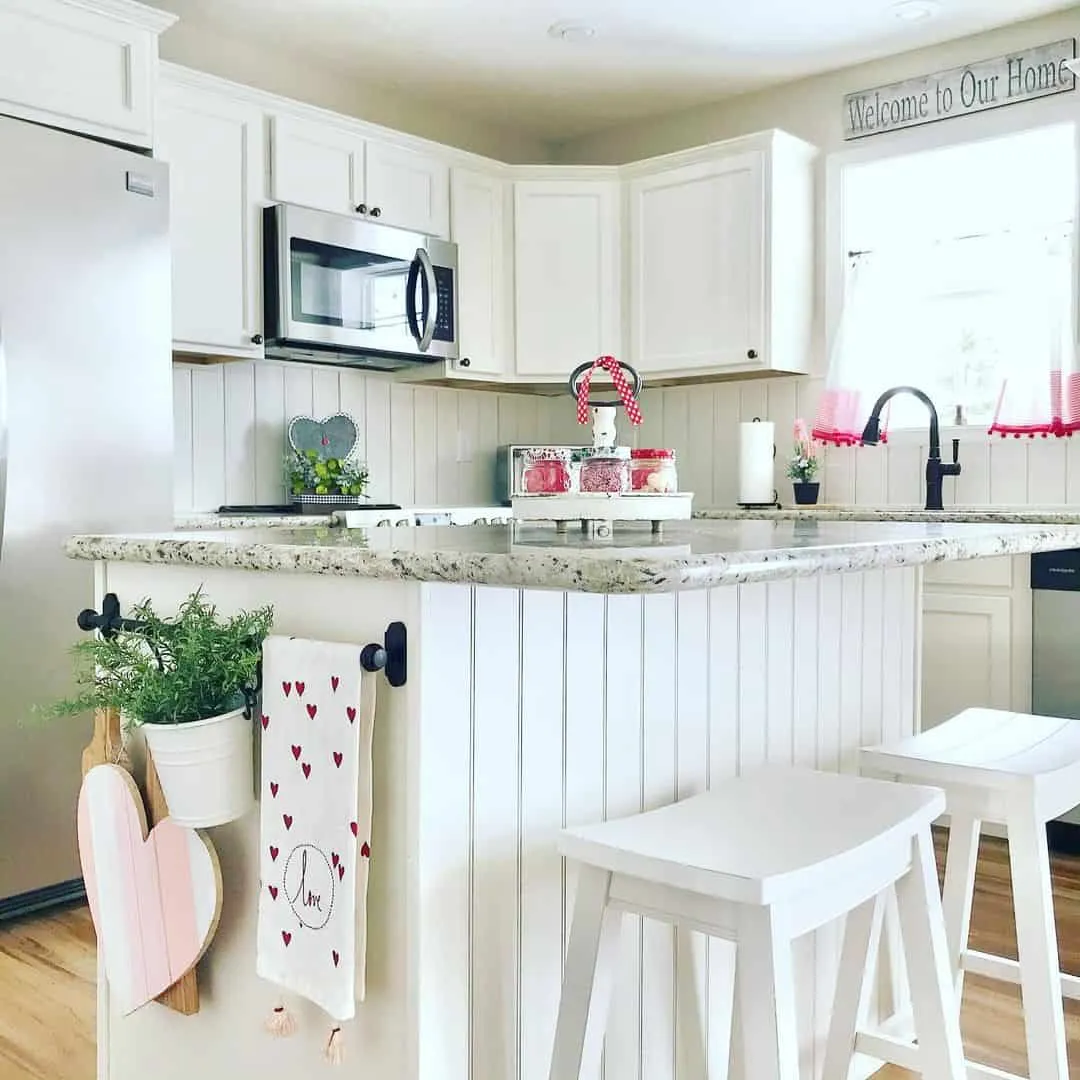
Consider shaker-style cabinets for a classic farmhouse look, or opt for paneled cabinets with simple, clean lines. The red hue can be a bold primary color for the cabinets, but you can also introduce it as an accent, such as on an island. When selecting the shade of red, a warmer, more subdued tone will typically create a cozy atmosphere, while a brighter red can add a touch of vibrancy. Pair red cabinets with white or cream countertops to create a balance, and choose a backsplash that complements your cabinet color. Wood countertops can also work wonderfully here, adding additional rustic charm.
Adding Rustic Hardware and Accessories
To complement red cabinets, choose rustic hardware, such as antique brass or wrought iron pulls and knobs. These details add character and enhance the farmhouse aesthetic. For accessories, consider adding vintage touches like a farmhouse sink, apron-front sink, and open shelving to display your favorite dishes and cookware. Adding a wooden kitchen island and a vintage light fixture will add more rustic charm. Decorative elements such as woven baskets, vintage artwork, and plants can further enhance the overall look. By focusing on these details, you can create a charming and inviting kitchen that perfectly blends rustic and red elements.
Idea 3 Modern Rustic with Red Walls
Modern rustic design combines contemporary elements with rustic touches, creating a stylish and functional space. In this layout, red can be used on the walls to provide a bold backdrop, allowing other rustic elements to stand out. This approach can be incredibly effective, especially in kitchens that already have sleek lines and modern appliances. The key is to balance the intensity of the red with neutral cabinetry, such as light wood or white, and to incorporate natural materials like stone or wood to soften the overall feel. This design approach is ideal for those who seek a more updated, yet welcoming, kitchen.
Creating a Balance with Neutral Elements
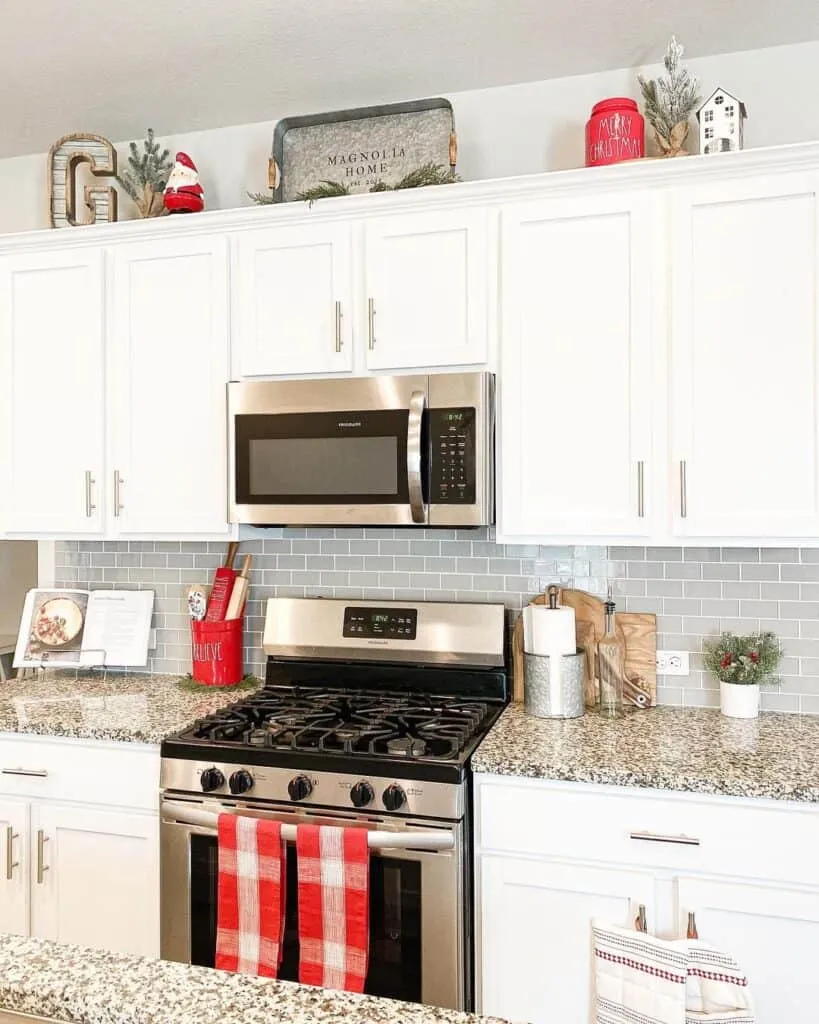
To prevent the red walls from overwhelming the space, balance them with neutral elements. Choose light-colored cabinetry, such as white, cream, or light wood, to create a visual contrast. Neutral countertops, like marble or quartz, will also contribute to the balanced aesthetic. Incorporate rustic elements such as reclaimed wood shelving or a farmhouse sink. This balance helps to create a warm and inviting space that embraces both modern and rustic elements. This approach creates a space that is bold yet comfortable, stylish yet welcoming.
Using Red as an Accent Color
If using red on all the walls feels too intense, consider using it as an accent color. Paint an accent wall in red or use red in your backsplash or accessories. Red can be introduced in smaller doses, such as through dish towels, a vibrant rug, or artwork. This technique maintains the feeling of the rustic design but avoids the potential overwhelming nature of too much red. Integrate red accents into your kitchen through strategically placed accessories and fixtures to make your space come alive and create an impressive atmosphere that embraces both modern aesthetics and rustic charm.
Idea 4 Small Kitchen Red Decor Layout
In a small kitchen, strategic use of color and layout is crucial. Red can be introduced in a small kitchen through accent pieces, such as a red-tiled backsplash, or by painting a single wall in a lighter shade of red. The key is to avoid making the space feel cramped. Consider using light-colored cabinets and countertops to balance the intensity of the red. Maximize space with smart storage solutions and open shelving to visually expand the area. This layout focuses on creating a cozy yet functional space, perfect for maximizing the potential of a smaller kitchen.
Maximizing Space in a Small Kitchen
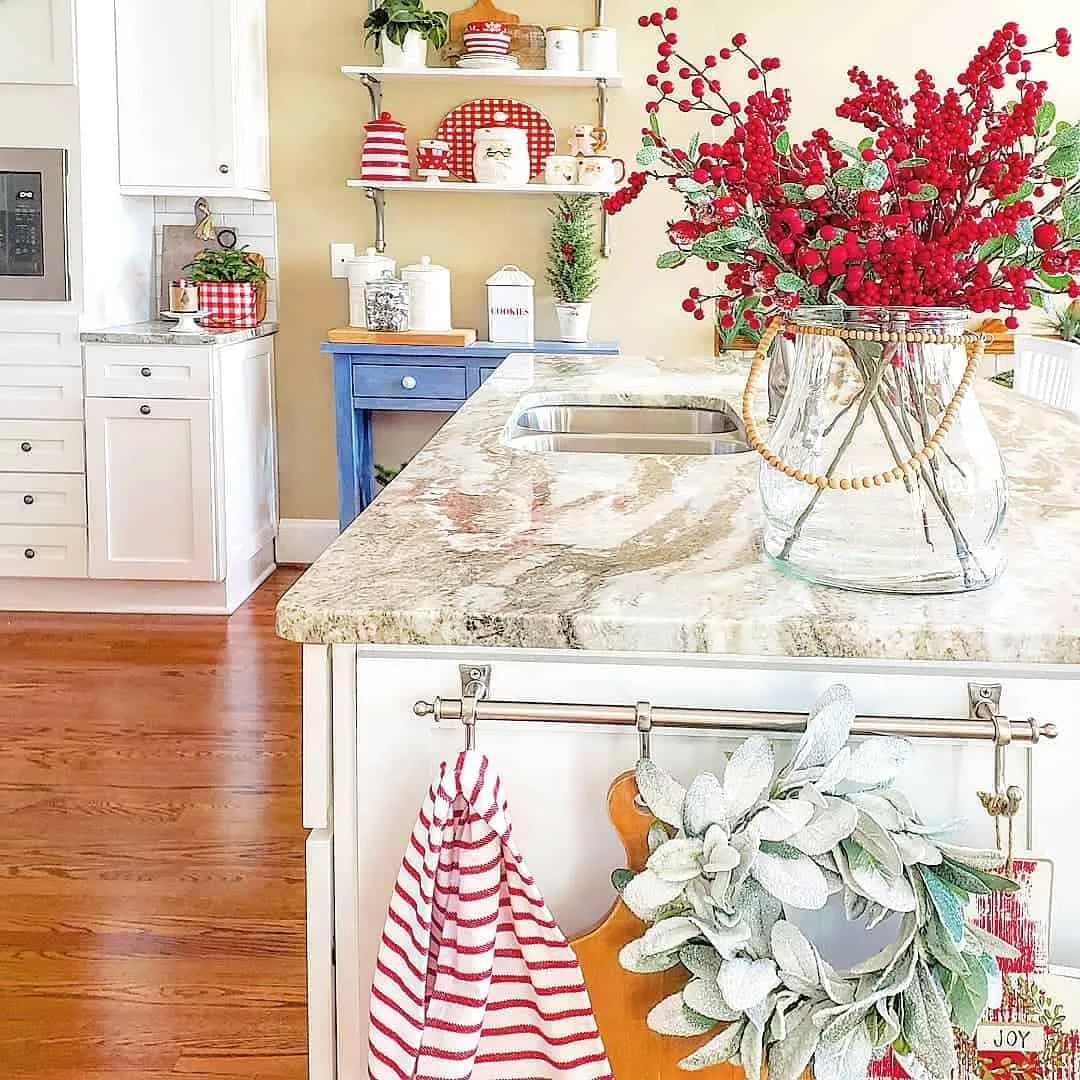
In a small kitchen, efficient storage is vital. Utilize cabinets that reach the ceiling to maximize vertical space and add open shelving to display your favorite items. Consider integrating drawers instead of shelves for easier access to your belongings. Use lighter colors for cabinetry and countertops to enhance the sense of space. Choose appliances that are compact and fit your needs. By maximizing the use of space, you can create a functional and visually appealing kitchen even in a smaller area. Making sure that your kitchen is not only functional but also stylish is essential.
Using Red to Create Visual Interest
To make a small kitchen more visually appealing, use red strategically. A red backsplash can add visual interest and serve as a focal point, or use red accents in small appliances or decor. Pair red with neutral colors such as white or cream to create contrast and visual depth. Incorporate natural light through large windows if possible, or use strategically placed lighting to enhance the space. These simple strategies help to make a small kitchen feel both spacious and stylish, making it a delightful place to cook and entertain.
Idea 5 Mixing Red with Other Colors
Mixing red with other colors allows for more creative and personalized design options. When combining red with other colors, it’s important to consider the overall tone and the feeling you want to create. Using the right color combinations can truly transform your kitchen into a beautiful and functional space. The goal is to strike a balance between the boldness of red and the complementary colors for a visually appealing and inviting kitchen.
Complementary Colors for Red
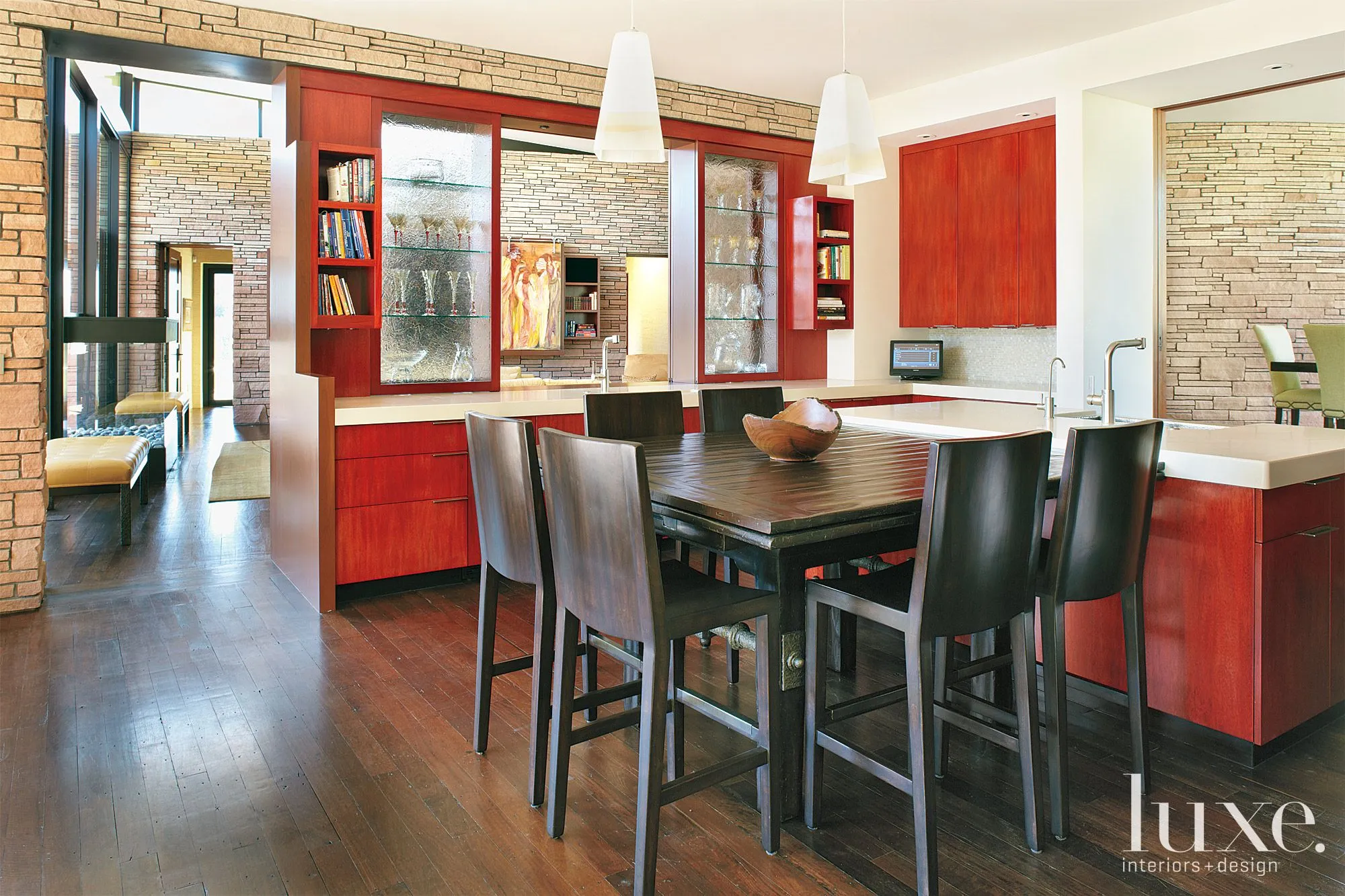
Consider pairing red with complementary colors to create visual harmony. Green, which is opposite red on the color wheel, can create a vibrant and balanced look. For example, a deep red kitchen with green accents will create a warm yet fresh atmosphere. Blue, another complementary color, can be used to create a cool and sophisticated design. Consider a kitchen with red cabinets and a blue backsplash or accessories. For a more neutral option, you can combine red with shades of cream or beige. This will soften the overall appearance and create a cozy ambiance. The key is to experiment and find a combination that suits your style.
Creating a Cohesive Color Scheme
When mixing colors, it is essential to create a cohesive color scheme. Consider the 60-30-10 rule where 60% of your space is one dominant color, 30% is a secondary color, and 10% is an accent color. For a red kitchen, you could use red as the primary color, a neutral such as cream as the secondary color, and a touch of green for accents. Ensure that all colors complement each other and create a unified look. Use color swatches and design tools to visualize how the colors will work together. This planning will result in a cohesive, stylish, and welcoming kitchen that highlights your chosen red theme.
Essential Elements for Rustic Red Kitchens
Regardless of the specific layout, there are several essential elements that are common to most rustic red kitchens. These elements help to create a cohesive and inviting space that embraces the beauty of rustic design. Paying attention to these details will greatly enhance the overall aesthetic and functionality of your kitchen, ensuring that the finished result is both beautiful and practical.
Choosing the Right Appliances
Select appliances that complement the rustic aesthetic. Consider stainless steel appliances for a sleek, modern look, or choose appliances with a vintage-inspired design. Another great option is to use panel-ready appliances. Consider a vintage-style oven, which can be a beautiful focal point in a rustic kitchen. The design can vary, from sleek and modern to more traditional styles with visible knobs and dials. Ensure that the appliances are energy-efficient and functional. The right choice of appliances can enhance the overall look and feel of your kitchen, ensuring that it fits your needs while complementing your chosen aesthetic.
Selecting Rustic Lighting Fixtures
Lighting plays a crucial role in setting the mood in your kitchen. Choose rustic lighting fixtures such as wrought iron chandeliers, pendant lights with Edison bulbs, or sconces made of natural materials. Lighting options can range from antique-inspired to more modern designs that still embrace the rustic aesthetic. These fixtures add warmth and character to the space. Consider layering your lighting with a combination of ambient, task, and accent lighting to create a well-lit and functional kitchen. The right lighting enhances the design and creates a warm, welcoming environment, contributing to the overall charm of the kitchen.
Adding the Finishing Touches
Add the finishing touches to complete your rustic red kitchen. Incorporate decorative elements like vintage artwork, woven baskets, and wooden cutting boards. Display cookbooks and kitchen utensils on open shelves to add character and functionality. Introduce textures with textiles like linen curtains or a woven rug. Don’t forget the importance of indoor plants to introduce natural elements. By paying attention to these details, you can create a cohesive and inviting kitchen that reflects your personal style and enhances the rustic charm. These finishing touches will transform your kitchen into a warm, inviting space.
